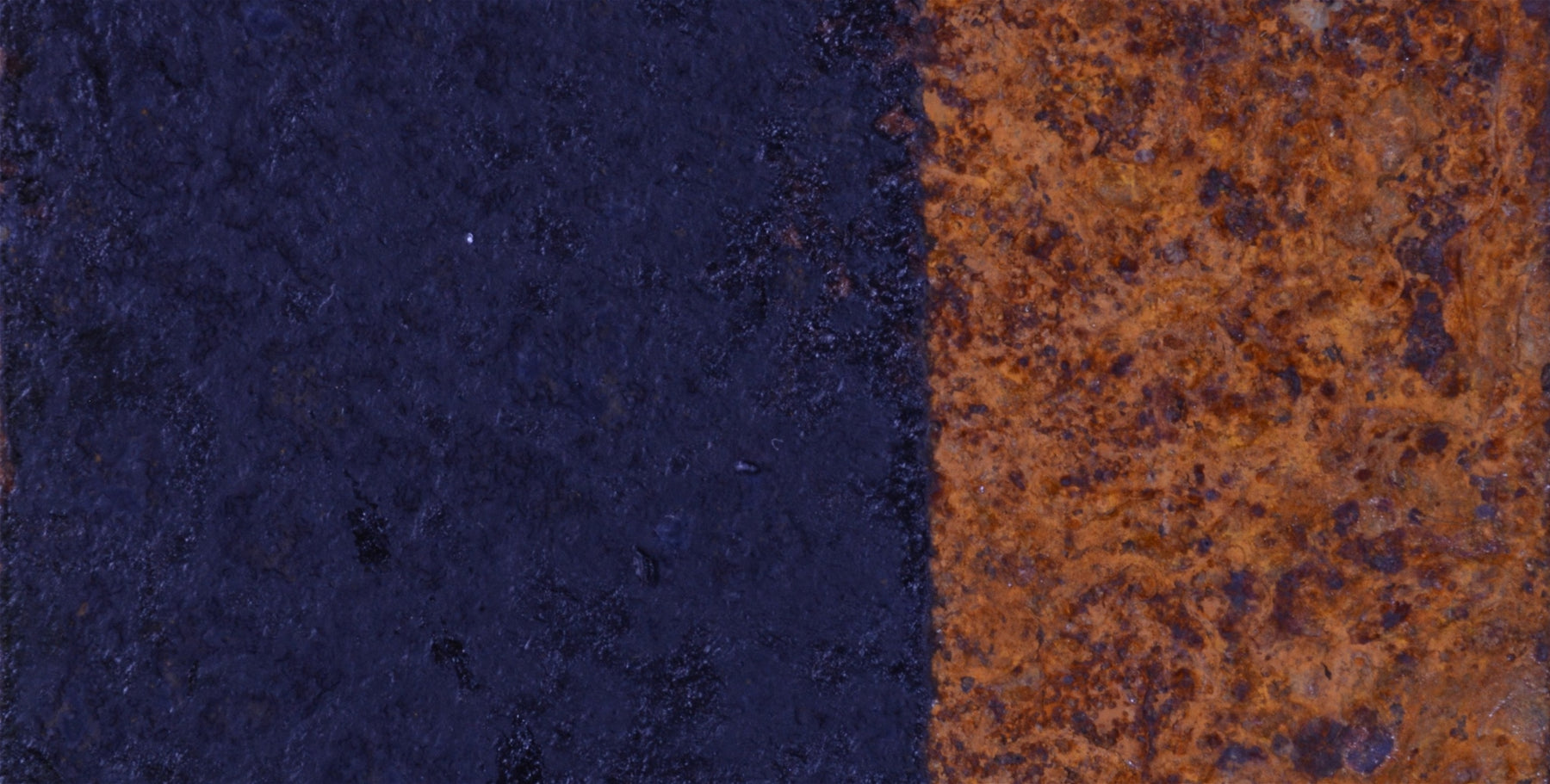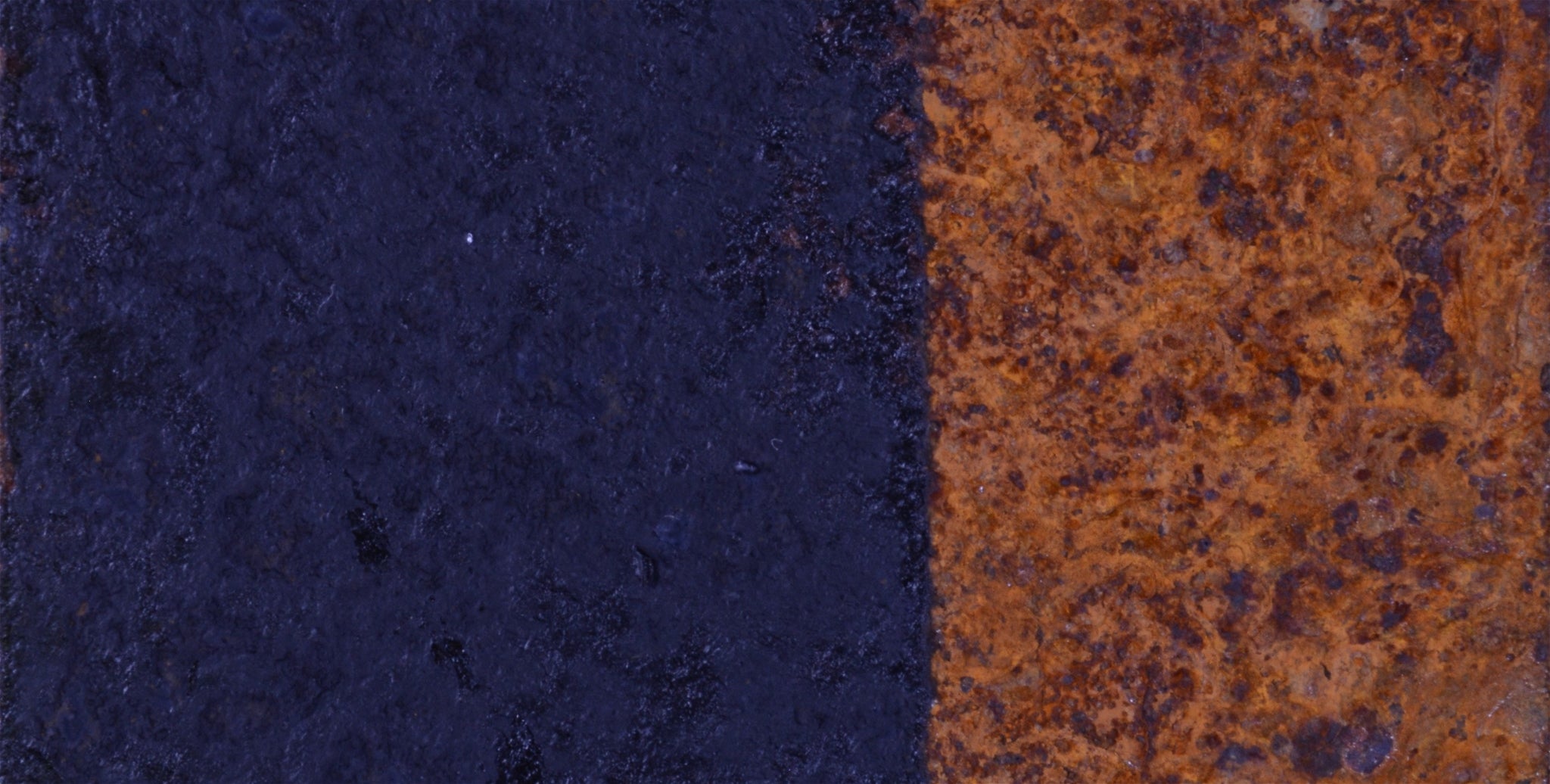Rust Converter FAQ's


Rust Converter FAQ's
What is Rust Converter? Rust Converter, a water-based primer, contains two active ingredients: Tannic acid and an organic polymer. The first ingredient, tannic acid, reacts with iron oxide (rust) and chemically converts it to iron tannate, a dark-colored stable material. Tannins are a group of water- and alcohol-soluble natural products extracted from fruits, trees and grasses. The second active ingredient is a proprietary organic polymer that provides a protective primer layer. The overall chemical reaction converts rust into a stable, black protective polymeric coating that serves as an excellent primer for both oil and epoxy based paints.
How is Rust Converter different than a rust remover? Rather than removing rust, a rust converter mixes chemically with rust to create a black inert substance that can be painted over, concealing the existence of any rust and preventing further corrosion.What is the shelf life for Rust Converter? Rust Converter has a shelf life of 9 months. We rotate our stock frequently to assure that the freshest batches reach our customers.
What objects can I use Rust Converter on? Rust Converter can be used on any rusty iron or steel object. It can be used on vehicles, trailers, fences & gates, iron railings and staircases, sheet metal, cast iron, outsides of tanks, lawn equipment, mower decks, farm equipment, tractors to name just a few. It will not work on aluminum, copper, stainless steel or galvanized metal. As a general rule, Rust Converter is a good solution to fixing rust on items you would consider painting.
How do I prepare the surface for application? Good surface preparation will enable the Rust Converter to work effectively and leads to a high quality end result. You will want to remove large rust and scale particles with a stiff bristled brush, hammer or sandpaper. The object of this step is to get any loose or flaking rust off as it does not provide a stable surface. The point is not to remove all the rust (this defeats the purpose of Rust Converter) as Rust Converter chemically bonds to the rust and seals it in. Rust Converter cannot penetrate grease or oil, so clean and degrease the surface first, then let it dry. This step ensures that other surface contaminants will not interfere with the reaction of the rust converter on the rusted surface. If the surface is subject to salt water spray for deicing salts, rinse the surface thoroughly with water, and allow it to dry prior to applying Rust Converter.
How is Rust Converter applied? For best results, apply Rust Converter with a brush or a roller. Use a brush for smaller applications and a roller for larger surfaces. It can also be sprayed on, but we recommend using an airless sprayer.
Can a pump up garden sprayer be used to apply Rust Converter? No. Rust Converter does not work in garden pump sprayers. It is too thick, even in the sprayable format, for these devices. Any sprayer that states it will spray water based paint will be a good choice.
Can I apply Rust Converter over non-rusted or painted surfaces? Yes, Rust Converter will adhere to non-rusted or painted surfaces but it does not provide any additional rust prevention when used on these surfaces.
Should Rust Converter be thinned? Rust Converter should not be thinned and should be applied as it comes out of the bottle, after being properly shaken or stirred.
How much metal will one gallon cover? One gallon covers up to 500 square feet of rusted metal. Porous, textured and irregular surfaces will require a heavier application rate.
Can I apply a primer coat over Rust Converter? Yes, an oil based primer may be applied over Rust Converter, but is not required.
Is it necessary to paint over Rust Converter? Although it’s not required, if your surface is exposed to the outdoor elements, we highly recommend applying two coats of a quality oil-based paint over Rust Converter. It will definitely extend the protective qualities of the surface from adverse weather including rain, salt mist and direct sunlight.
What type of paint should I use to cover the Rust Converter? Use oil based or epoxy paints to paint over Rust Converter, do not use Latex or water based paints.
How many coats of Rust Converter should I apply? Many applications require one coat. We suggest applying a second coat to assure complete coverage and conversion.
How long does it take Rust Converter to dry? Rust Converter will dry to the touch in approximately 20 minutes. Application of a second coating will ensure proper rust conversion. If possible, wait 24 hours before applying a second coat of Rust Converter to allow for curing. If applying an oil-based top coat, wait 48 hours after the last coat to ensure it has proper time to cure.
How should I clean my application equipment after applying Rust Converter? Simply use soap and water for clean-up!
Can I use Rust Converter on my grill, cast iron wood stove, engine, boiler, or any other heated surface? No, Rust Converter is not heat resistant and should not be used on any surface that will be heated.
Can Rust Converter be used on galvanized steel? It’s only effective on the highly rusted areas where iron oxide (rust) is present, and will not bond effectively to the galvanized areas.
Can Rust Converter be used inside a tank? No, we do not recommend using Rust Converter inside a tank, but it is commonly used on the outside of large tanks.
At what temperature can I apply Rust Converter? Apply product when the temperature is between 50 and 100 degrees F. It’s best to avoid applying Rust Converter in direct sunlight or under very damp conditions. Do not apply if the surface temperature is below 50 degrees F.
Can I use leftover Rust Converter after I’ve poured it out of the bottle? No, once it’s been exposed and used, it should not be returned to the bottle with any unused liquid.
What protective equipment is required? It’s recommended that either safety glasses or goggles be worn along with chemical resistant gloves as it may cause eye or skin irritation. It is mild, but like with all chemicals (paint included), we recommend exercising caution.
How should I dispose of any unused Rust Converter? Contact your local regulatory agency to determine the proper method of disposal.
Is Rust Converter harmful if ingested? Yes, Rust Converter contains tannic acid and medical attention should be sought immediately if ingested.
Are vapors from Rust Converter harmful? The vapors emitted from Rust Converter are similar to latex paints and are not harmful, but it is recommended that it be applied only in well ventilated areas.
Is Rust Converter approved by the FDA or USDA? No, Rust Converter shouldn’t be placed in contact with foods or human water supply.
How does Rust Converter need to be stored? It’s best to store Rust Converter out of direct sunlight at room temperature. Do not allow to freeze and avoid temperatures above 100 degrees F.
Can I put a powder coat over Rust Converter? We have not tested rust converter using a powder coating. From our information, powder coating is not typically applied over a primer coating, but instead is applied over bare metal. We do not know how effective the powder coating would be in adhering to the rust converter product, and it may start to flake off. We do not recommend using a powder coating over the rust converter.
